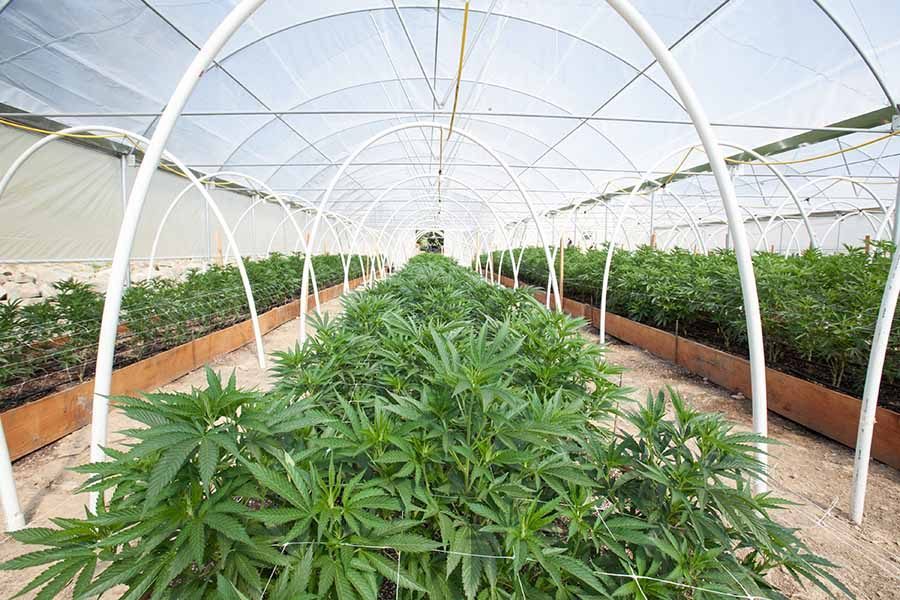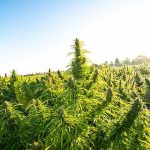Can Legalization Lower the Carbon Footprint of Cannabis?
It’s no secret that the cannabis industry is booming. So far, 38 states and Washington D.C. have legalized medical marijuana use [1], and 16 states as well as Washington D.C. and Guam are now allowing the use of recreational cannabis [2].
More could be added to the list during the years to come. THC and CBD-infused products are becoming more popular by the minute. At the same time, hemp growth and production are now legal across the country, adding even more branches to the sector.
Quite a few people are celebrating the growing acceptance of marijuana and hemp. Countless business-minded individuals, farmers, and members of the general public are sure to benefit from the spreading legalization of weed. That being said, many are also concerned about the impact these developments could have on the environment as greenhouse gas emissions have been rising. Can the legalization of cannabis reduce the industry’s carbon footprint, or might it ultimately take a massive toll on our planet?
Potential downsides of cannabis legalization
Every situation has its own benefits and disadvantages. The ever-growing cannabis industry is certainly no different. First of all, we’ll take a look at the possible downsides of growing and processing massive amounts of marijuana.
Energy consumption
Some methods of cannabis cultivation and processing use a great deal of electricity. By some accounts, an indoor growing facility can use as much as 150 kilowatt-hours per square foot each year compared to outdoor cultivation. For comparison, the average American household uses about 11,000 kilowatt-hours per year overall [3].
On the other hand, standard product manufacturing facilities consume around 95 kilowatt-hours of electricity per square foot annually. They also use about 536,000 BTUs of natural gas per square foot each year [4]. That’s on the lower end of the spectrum.
Growing crops doesn’t necessarily require a great deal of electricity and energy usage in its own right, but several factors have to come together to foster cannabis cultivation. Temperatures and humidity levels need to be within the optimal range, and appropriate ventilation is essential.
When marijuana is grown in indoor facilities as opposed to greenhouses or outdoor fields, all those elements must be regulated artificially. All the necessary equipment for doing so is where the majority of the energy consumption comes from in terms of farming.
In addition to the electricity consumed by indoor growing, various cannabis processing methods use energy as well. These include drying the flowers and extracting oils. Creating edibles, topicals, tinctures, and other products requires energy just like facilities and processes in other industries, such as food production, beverage manufacturing, vehicle production, and clothing manufacturing.
Harmful emissions
Indoor cannabis growing facilities can affect the rise of greenhouse gas emissions. Most of this comes from all the equipment used to regulate the indoor growing environment. Facilities that process cannabis-based products create harmful emissions as well. According to a recent report, one kilogram of marijuana product can generate the equivalent of 4,600 kilograms of CO2 emissions [5].
It will be important for indoor cannabis cultivation growers to keep in mind the impact that large scale grows may have on greenhouse gas emissions and how environmental regulations may look at these operations.
Water consumption
Some analysts also point out the amount of water required for cannabis plants to thrive. Each marijuana plant needs about six gallons of water per day throughout the growing season [6]. Of course, many are quick to argue that other types of plants have similar water requirements, including the ones we grow constantly and depend on for survival, such as tomatoes, potatoes, and corn.
Upsides of cannabis legalization
Now that we’ve gone over the potential environmental pitfalls of legalizing cannabis, let’s look at the matter from a more positive angle. After all, the cannabis industry has ample advantages. At the same time, the downsides we’ve covered don’t necessarily have to come into play. High-quality CBD products can be produced using measures to combat the possible environmental impacts.
Oxygen production
We all know that we need plants to survive. They produce the oxygen we need to breathe, and they absorb certain harmful gases like carbon dioxide. With about 80,000 acres of rainforest being lost per day and thousands of acres of trees being cut down for consumption needs and to make room for new buildings, the world is quickly losing a significant portion of its natural source of oxygen [7].
In short, we need all the oxygen-producing plants we can get to combat the destruction. Legalizing cannabis gives people more freedom to plant and grow it. In turn, doing so will add far more oxygen-generating, carbon dioxide-reducing plants for us to take advantage of.
Mitigating energy consumption and greenhouse gas emissions
It’s true that growing cannabis indoors requires a great deal of electricity. That’s not the case when growing it outdoors. With outdoor marijuana crops, the temperatures and humidity levels are controlled naturally without needing machines to intervene. Even growing crops in a greenhouse rather than an indoor facility can reduce energy consumption by 40 percent or more according to some sources.
Indoor growing facilities can take several steps to reduce their impacts on the environment. These might include using more energy-efficient HVAC systems to aid in regulating temperatures and humidity levels. Humidifiers and dehumidifiers can be installed on heating and air conditioning systems to improve their effectiveness without impacting their energy consumption levels. Air purification systems can also be used to help eliminate airborne contaminants potentially created by indoor grows.
Reducing water consumption
Although marijuana plants require large volumes of water to thrive, outdoor grows get much of their water from rain. Collecting rainwater for irrigating crops on drier days can also go a long way toward reducing water consumption. At this point, harvesting rainwater is only illegal in Utah and Colorado [8]. Hydroponic growing is an effective way to consume less water as well. Hydroponics uses 10 times less water than traditional growing and it can be implemented in greenhouses and indoor growing facilities alike [9].
Bottom line: Marijuana legalization will help
Can legalizing cannabis reduce the industry’s carbon footprint? Though many people insist it’ll only make more of a negative impact on the environment, they’re only looking at one side of the story. Marijuana legalization will produce more living plants to generate oxygen and scrub carbon dioxide from the air.
Removing restrictions on cannabis use and cultivation will give more growers the freedom to take advantage of greener growing methods, like outdoor planting and greenhouses, as well. Additionally, using more energy-efficient growing techniques and taking additional measures to reduce greenhouse gas emissions and water consumption will further decrease the industry’s impact on the planet. Renewable energy sources will play a role in the evolution of the cannabis production and environmental impacts will lessen as the industry develops. Along the way, countless people will benefit from growth in the cannabis sector.
Disclaimer – Information is provided for educational purposes. It does not, and is not intended to, constitute legal advice or medical advice. We attempt to be accurate and up to date but the legality of cannabinoids and the science of cannabis is evolving. The author is neither a lawyer or a legal expert, nor a doctor or medical expert. You should check with your local authorities and medical providers before buying or using any products.
References
- These States Could Still Legalize Recreational Or Medical Cannabis in 2021
- US News & World Report: States Where Recreational Marijuana Is Legal
- US Energy Information Administration: How Much Electricity Does An American Home Use?
- Friendly Power: Average Energy Use Data – Manufacturing Facilities
- Science Direct: The Carbon Footprint of Indoor Cannabis Production
- CannaTech: The Carbon Footprint of Legal Cannabis
- Scientific American: Measuring The Daily Destruction of the World’s Rainforests
- Perfect Water, Rainwater Harvesting Laws – Is It Illegal?
- National Park Service, Hydroponics: A Better Way to Grow Food
Frequently Asked Questions
Will CBD Products Show Up On A Drug Test?
There is a risk of failing a drug test. It depends on the type of CBD product one is using.
Drug tests for marijuana generally identify THC or its metabolites. Although tests do not screen for CBD, full spectrum CBD products contain low quantities of THC that can make a person fail a drug test. If you anticipate taking a drug test, we suggest checking with your employer or test administrator for clarity prior to taking full spectrum CBD products.
Is It Illegal To Send CBD Products In The Mail?
Yes, but even though these products are federally-compliant, individual states may have their own regulations about purchasing or using hemp-based products, and these are subject to change. You should check your state and local rules before ordering. We ship nationwide.
What Does "Hemp-Derived" Mean?
Hemp-derived means made from hemp, sometimes also referred to as industrial hemp. The 2018 Farm Bill (see next section) established new federal legal definitions and rules for hemp, including that hemp and “and any part of that plant, including the seeds thereof and all derivatives, extracts, cannabinoids, isomers, acids, salts, and salts of isomers, whether growing or not, with a delta-9 tetrahydrocannabinol concentration of not more than 0.3 percent on a dry weight basis” may be used for production, sales, transport, and use.






